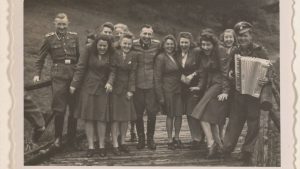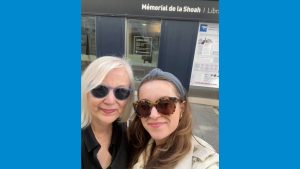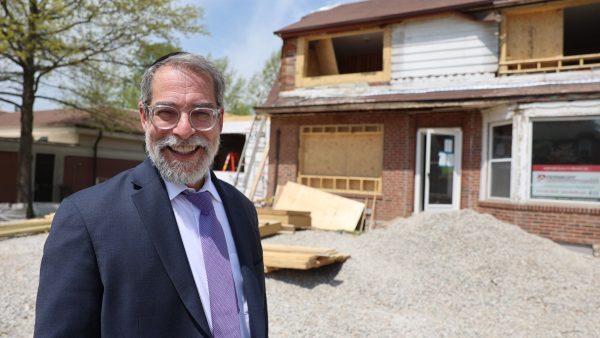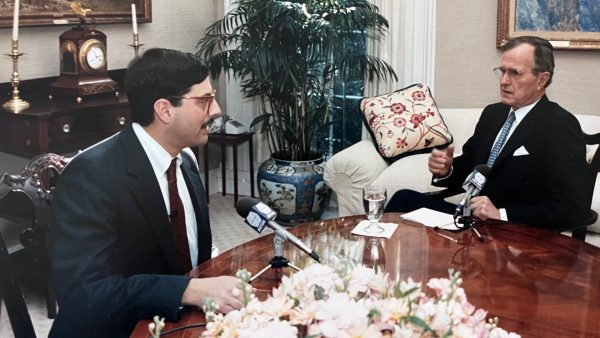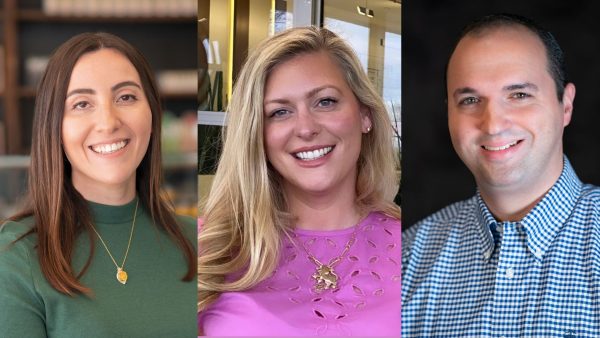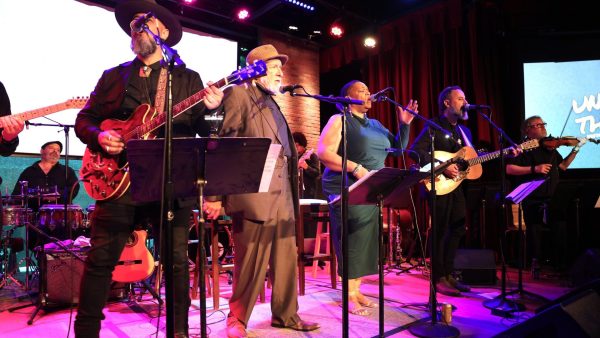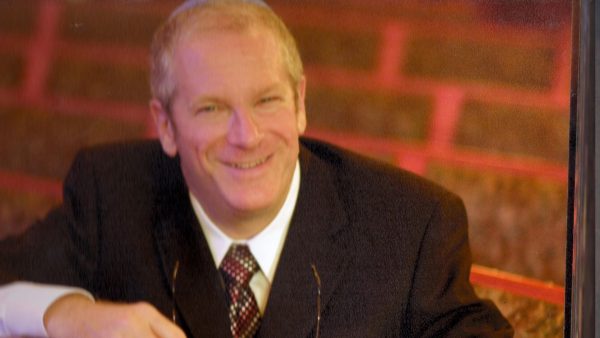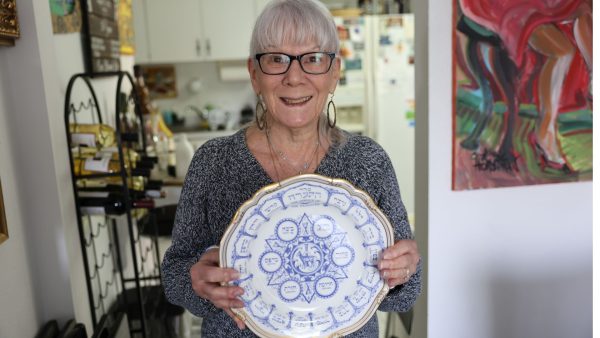Jewish leaders converge to discuss collaboration
Published March 11, 2010
Mutual trust and adaptation to a fast-changing world will be keys to the survival of American Jewish communities in the 21st Century. That was the message a nationally-noted rabbi delivered to area Jewish leaders on Thursday evening.
“It doesn’t work anymore when you call a Jewish institution and Sylvia answers the phone and she can’t even transfer you to the right extension,” Rabbi Hayim Herring told an audience of dozens of executives, staffers, volunteers and board members from across the St. Louis Jewish community. “If we perceive that we are in a new era or on the threshold of one, then that will determine the quality of our thinking and we will look not for just a reiteration of the old but really open ourselves up to rethinking the possibilities of Jewish life today.”
Herring, head of the Herring Consulting Network and former leader of the Synagogues: Transformation and Renewal (STAR) program, was the keynote speaker for a four-hour wide-ranging presentation and discussion convened by the Jewish Federation of St. Louis to consider the benefits and challenges posed by collaborative efforts.
“We’re thrilled that people took this much time out of their busy schedules to talk about this important issue in the community,” said Jewish Federation’s Mindee Fredman, who noted that around 140 had signed in for the event. “I think it shows that people are committed to it and are interested in exploring new ways to collaborate.”
Herring told those assembled that the modern world was defined by an “age of four A’s,” — anything, anyone, anytime, anywhere. From entertainment to commerce to philanthropy to culture, shifts in technology have allowed individuals worldwide to obtain, use and create information, products and services at a rate never before seen in human history. People, he said, are more mobile, more demanding and more willing than in previous decades to bypass mainstream institutions that offer delays or inefficiencies.
Feedback is also more wired than ever with websites such as shulshopper.com which allows anyone visiting a synagogue to review it leaving public comments for others to see. Herring said that an online presence is vital to any Jewish organization as social media networks like Facebook and MySpace increasingly define how a new generation of Jews interact with the world.
Unfortunately, Jewish agencies and synagogues haven’t always kept pace with Herring’s four A’s. He talked briefly about his own experiences in Minneapolis, where he said an “overbuilt, under-resourced” Jewish community had found itself in an unsustainable situation working from an outdated model. Collaborative efforts, Herring said, were one key to changing that picture.
“Organizations should focus on what they do best and network with others to achieve the rest,” he said. “I think the question is how we can use our infrastructure, our social capital, our spiritual capital, our educational capital to help create additional deeper connections.”
Herring stressed that it was important to separate the economic need to combine operations from the programmatic benefits of doing so. Creating more efficient logistics is a quick and necessary process to conserve resources. True collaboration however, will take longer.
“As you are thinking about collaboration, understand that it may not necessarily eliminate costs but it does have the potential over time to raise the value and the quality of what’s being offered,” he said.
Herring also spoke about mergers, a topic he joked is so sensitive that he can only talk about it while on the road, never in his own hometown.
“It needs to happen in every community,” he said. “I can’t tell you which organizations in any given community but we have to recognize the loss in that, the fear, the pain that’s involved and also the good for the community, the ability to reach and impact more individual lives and maintain the kind of quality we expect.”
Herring’s talk was supplemented by some brief asides that demonstrated examples of what collaboration could achieve. These included Michael Staenberg, president of the Jewish Community Center, sharing a story about his efforts with local Jewish institutions which resulted in $250,000 in savings on insurance in the first year of a collaborative effort to rethink policies while simultaneously acquiring better coverage. Two officials from Jewish community leadership in Cincinnati spoke about successes and problems they encountered in restructuring institutions through a community efficiencies task force that dealt with issues ranging from relocating Jewish institutions to lowering utility bills through cooperative energy-buying efforts. Finally, Herring described the Kehillah Partnership, an education-focused initiative in northern New Jersey to reinvigorate the Jewish community there.
After the presentations, participants broke up into five groups, covering areas of interest from congregations and education to community relations and Israel advocacy. Led by Federation staff, each spent time discussing possible collaborative efforts in the St. Louis area.
Most who heard Herring seemed upbeat about the message he delivered.
“He’s 100 percent on target and there’s no question that if we don’t get going and start talking about this kind of thing that we’re going to be even further behind than we already are in terms of our missions and people that we serve,” said attendee Barb Perlmutter, who serves on the board of Traditional Congregation.
“I was especially interested in his list of ways of collaborating,” said Jennifer Newfeld, director of congregational learning at B’nai Amoona. “It’s not just merging. How can we think about other ways to keep our own individual identities but collaborate in ways that are mutually beneficial?”
“There are a number of creative ideas that other communities are utilitizing to address these issues,” said Bob Newmark, president of the St. Louis chapter of American Jewish Committee, who said he hoped a “shared sense of urgency” would result from the gathering. “I think some of those could be implemented here or will spark ideas about what could be implemented here.”
Michael Litwack, a past president of the Jewish Federation, called Herring’s remarks both “enlightening” and “a little frightening.”
“The last thing he said is that if we don’t have trust when we are all in this together, then we will never accomplish what we need to accomplish,” he said. “I think that’s a very important message.”
Herring noted that it’s natural that community members with deep commitments to institutions will sometimes react with “a certain vehemence” when issues of collaboration are broached. That should be seen as a test of leadership’s ability to relieve anxiety, he said.
“They often interpret that as meaning we only have one way of presenting Jewish culture, religion and civilization,” he said. “That will never happen in a Jewish community only because it never has happened. That’s part of our strength. There is no single one-size-fits-all Judaism formula for everyone.”
SIDEBAR: Methods for community partnership
Mergers may be the most controversial — and painful — of the methods available to organizations and synagogues looking to work together but less dramatic avenues of partnership can also be on the menu. A number of these were outlined by Rabbi Hayim Herring during his talk last week:
* Collaboration. Herring describes collaboration as a well-defined relationship entered into by two or more organizations to achieve a limited set of common aims. Generally, this requires a commitment to mutual goals, responsibilities and authority within a jointly developed structure. “Typically, collaborations work well around specific functions whether it be adult learning, camping or professional development,” he said.
* Strategic alliance. An alternate method of collaboration is a strategic alliance, effectively a partnership between groups to work toward given goals. Herring gave the example of a multi-stream rabbinic group he attends. “Nobody has changed their corporate structure,” he said. “Everybody maintains their identity yet we have already upped the bar of expectations just by coming together.”
* Management services corporation. Organizations don’t necessarily require shared values or goals in order to partner. Instead, agencies can combine logistical operations such as IT, human resources and purchasing, while maintaining separate identities. “In this case, entities do not change their individual corporate structures, their legal structures, but they come together to create a new entity where all parties have an equal stake to work on these back-end kinds of savings,” he said.
* Joint programming corporation. Operations that do have similar objectives can create third parties to manage common projects. This kind of work does require some mission overlap between groups however. “Instead of working on back-end functions and creating a separate organization to deal with that,” Herring said, “people will come together and pool their funds around programming and create a separate entity to work on a particular area.”
* Networking. Working together need not take the shape of an overly formalized arrangement requiring a hierarchical structure or a separate entity. “In networks, it’s basically that you work on a project together, you increase your communication,” Herring said. “Leadership is determined by expertise and not title. That’s another way to move quickly in terms of sharing resources.”
* Reinvention. Perhaps one of the toughest routes is reinvention. It’s basically building or redefining an organization or concept from the ground up. Herring gives the example of innovative movements like Chabad which he said have “reinvented the model of the synagogue.” Independent minyanim have also changed the manner in which people view worship. “That’s really hard to do. It’s hard to do because it’s difficult to imagine a future that’s radically different than what’s before your eyes,” he said. “To reinvent is to totally give up on every assumption you hold about your organization, not its history and its work but to think about ‘Is it needed today? Why do we do the things that we do the way that we do them?'”
— David Baugher






